
| Photos From Wyoming Tales and Trails This page: Greybull continued, Greybull Refineries, Baseball |
 |

| Photos From Wyoming Tales and Trails This page: Greybull continued, Greybull Refineries, Baseball |
 |
|
|
|
About This Site |
|
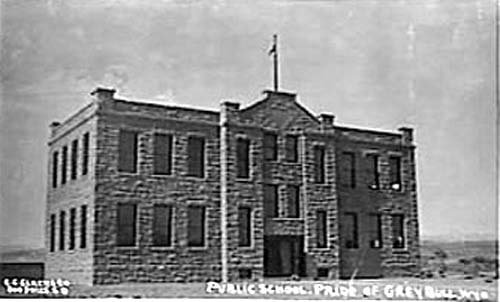 Greybull School, 1911. As noted on an earlier page, Greybull used the Borner cabin as a school house. The school is an indication of just how fast Greybull grew after the coming of the railroad. Only eight years before in 1903 was the first masonry school constructed in the county at Odessa near Shell, some 16 miles east of Greybull. The Odessa school, at its maximum, only housed 40 students. Prior to the construction of the Odessa school, all schools in the county were constructed of logs.
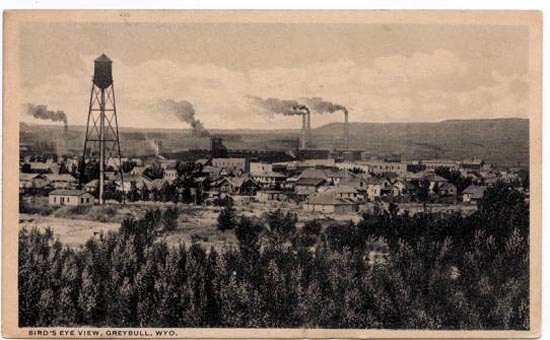 Greybull, 1918.
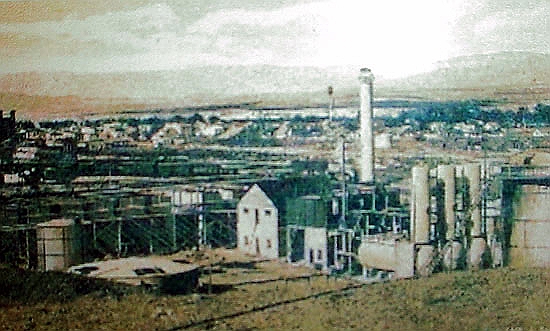 Midwest Refinery, undated, photo by W. A. Sode As previously noted, the prosperity of the area was dependent upon the oil fields immediately to the south of town and the two refineries.
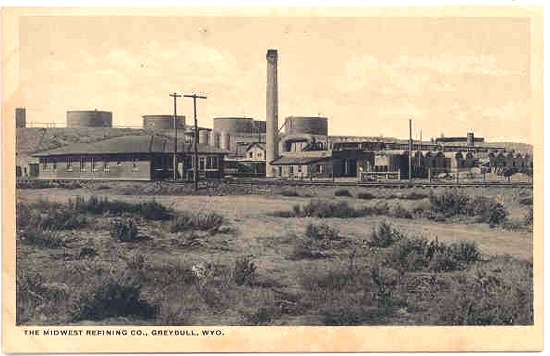 Midwest Refining Company, Greybull The Midwest Oil Company sponsored, among other things, a semi-pro baseball team, the Greybull Bisons, which played in the six-team Midwest League. Teams were located in three states.
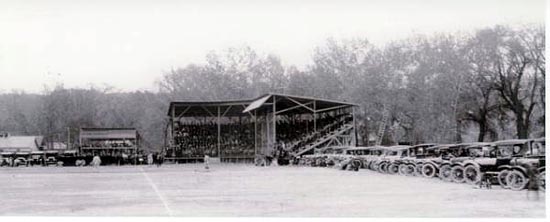 Season Opener, Greybull Bisons, Midwest Park, 1921. Players for Greybull were of two types, those from minor leagues, hoping to be noticed by major league scouts, and those who had previously played for a major league team. An example of the former was Herman G. "Herm" Merritt (1900-1927) who played shortstop in 1921 for the Detroit Tigers. An example of the latter was a Shawnee Indian, Jim Bluejacket (1887-1947), originally from Adair, Oklahoma.
The Federal League was a short-lived major league. The presence of the third league provided opportunity for players to jump ship, so to speak, and caused salaries to increase. The American League, the National League, and most of the minors recognized the so-called "reserve clause," which prevented players from moving from one team to another. At the end of the 1915 season, important owners from the Federal League, in exchange for $800,000 and two new expansion teams in the two older leagues, agreed to disband the Federal League. The owners of the Baltimore Terrapins were left out in the cold. With the dismantling of the league, there was no one for the Terrapins to play. The owners of the Terrapins sued for violation of the Sherman Anti-Trust Act, arguing, among other things, that the reserve clause was invalid as a restraint of trade. The appellate courts held, not withsanding the players and equipment were moved across state lines, that each game itself was particularly local; that is, a game was not played across state lines. Instead, each individual game was played in a single location. Therefore, baseball was not interstate commerce and the Sherman Anti-Trust Act did not apply to baseball. Players who had previously played for an American League or National League team and violated the Reserve Clause by jumping to a Federal League team, were, for the most part, blackballed and were able to find employment as a ball player only in industrial leagues such as the Midwest League. [Writer's note: The Midwest League sponsored by the Midwest Oil Company, was unrelated to the current Midwest minor league.]
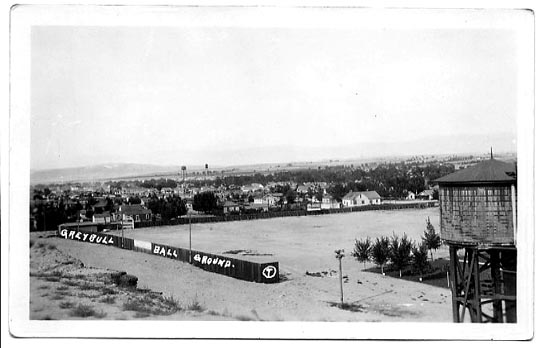 Greybull Ballpark, approx. 1920. Photo by Gifford Talbott. The Midwest Greybull refinery was transferred to the Standard Oil Company of Indiana in 1921. Standard had no interest in sponsoring baseball and, thus, both the Greybull team and the League folded. Bluejacket, however, pursued a sucessful career in the petroleum industry. The Greybull Refinery closed in 1948.
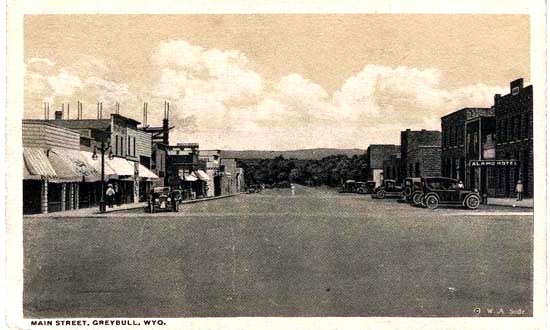 Greybull Ave. looking east, undated. Photo by W. A. Sode. Compare with next photo. William A. Sode (1879-1963) was a Colorado Springs souvenir dealer. At one time he was associated with the Colorado photographer Harry Landis Standley (1881-1951) in a curio business in Mantitau Springs, Colorado. Standley is noted for his handcolored postcards of the Colorado Rocky Mountains.
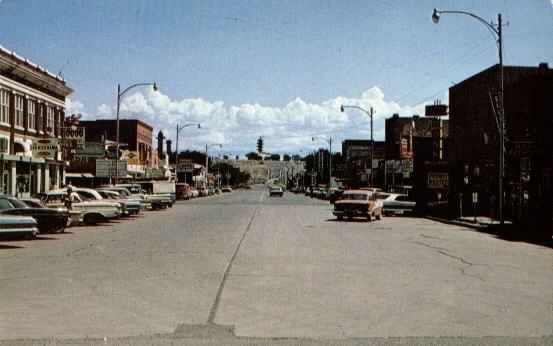 Greybull Ave. looking east approx. 1960.
Next page: Greybull continued. |